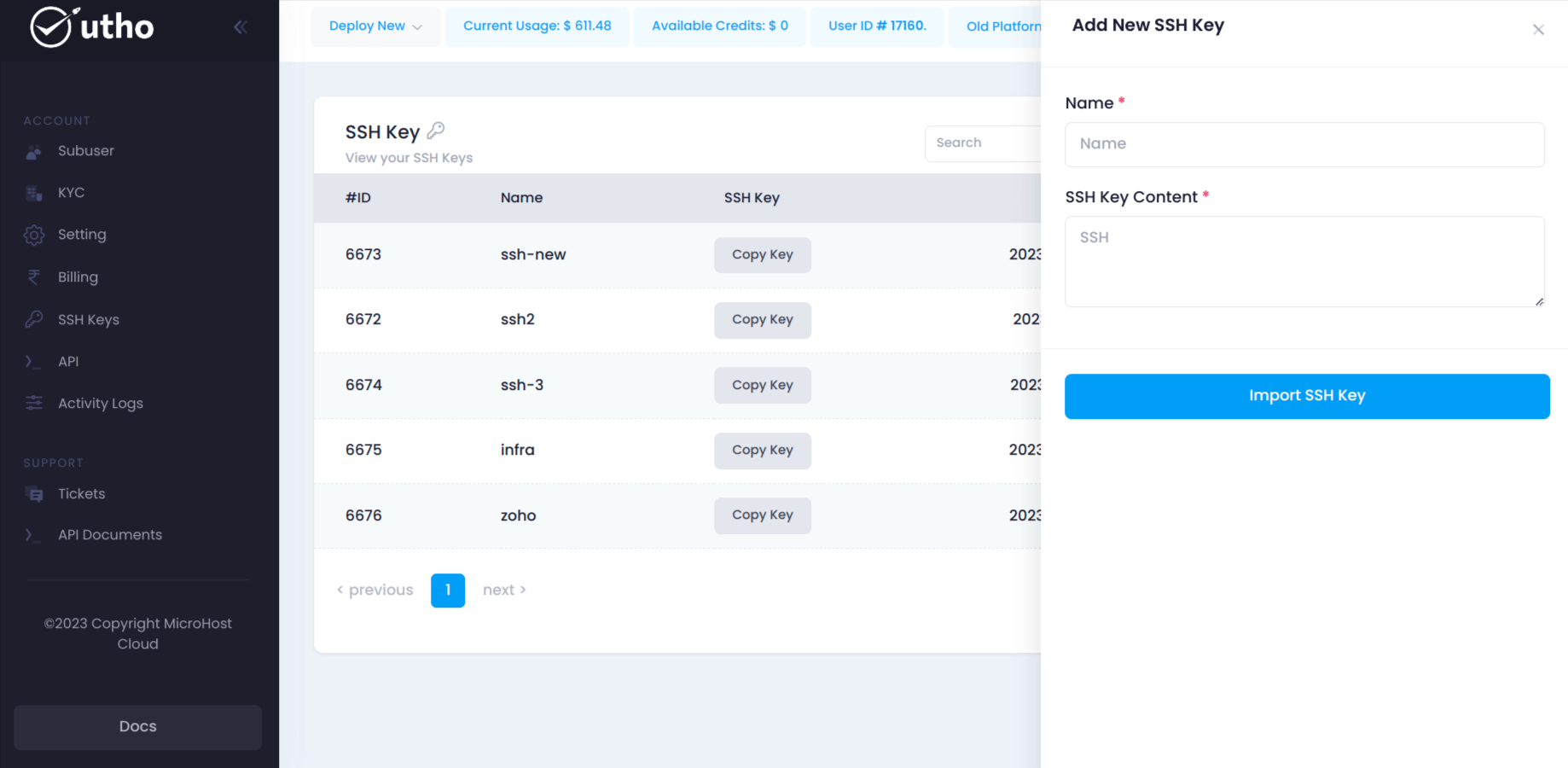Secure Your IoT: Mastering RemoteIoT SSH Key Management
In an era where connectivity reigns supreme, the proliferation of Internet of Things (IoT) devices has ushered in unprecedented convenience and innovation. However, this expansive network of interconnected devices also presents a formidable challenge: ensuring their security. At the heart of this critical endeavor lies robust remoteiot ssh key management, a fundamental practice for safeguarding sensitive data and maintaining system integrity across your distributed IoT infrastructure.
As IoT deployments scale from a handful of devices to vast ecosystems spanning continents, the complexity of managing access and authentication grows exponentially. Traditional password-based authentication, inherently vulnerable to brute-force attacks and human error, simply isn't sufficient for the stringent security demands of modern IoT. This is where SSH (Secure Shell) keys emerge as a superior, more secure alternative, providing a cryptographic method for authenticating users on remote servers and devices, including your crucial IoT endpoints.
Table of Contents
- The Imperative of SSH in a Connected IoT World
- Understanding RemoteIoT SSH Key Management: The Core Concepts
- The Power of Centralized RemoteIoT SSH Key Management
- Key Benefits of Adopting a RemoteIoT SSH Key Management Platform
- Scaling RemoteIoT SSH Key Management: Balancing Security and Efficiency
- Implementing Best Practices for RemoteIoT SSH Key Management
- Choosing the Right RemoteIoT SSH Key Management Solution
- Future-Proofing Your IoT Security with RemoteIoT SSH Key Management
- Conclusion
The Imperative of SSH in a Connected IoT World
The global landscape is witnessing an unprecedented surge in IoT device adoption. From smart homes and industrial sensors to connected vehicles and smart cities, these devices collect, transmit, and process vast amounts of data, often sensitive in nature. With this rapid growth, there is an increasing need for robust security measures that can keep pace with the evolving threat landscape. Unsecured IoT devices are prime targets for cyberattacks, leading to data breaches, system compromises, and significant financial and reputational damage.
- %C3%B0%C3%B0%C2%B5%C3%B1%C3%B1%C3%B0%C2%B5%C3%B0%C3%B0%C2%BA%C3%B0
- Beatrice Milly
- John Bennett Perry
- How Much Does Jimmy Kimmel Make A Year
- Chris Kempczinski Salary
This is precisely where SSH (Secure Shell) steps in as a cornerstone of remote access security. SSH provides a secure channel over an unsecured network by using strong encryption. With SSH, administrators can efficiently manage IoT devices remotely, streamlining operations while lessening the requirement for physical access. This capability is particularly vital for devices deployed in remote or hard-to-reach locations, making remote management not just a convenience but a necessity. The ability to directly SSH or VNC connect to a Raspberry Pi behind a firewall or NAT router, as if it were on the local network, without needing to discover the IoT device IP or change any firewall settings, exemplifies the profound operational advantages that secure remote access offers.
Understanding RemoteIoT SSH Key Management: The Core Concepts
At its essence, SSH key management involves generating, distributing, and controlling SSH keys for user authentication on remote servers and, crucially, on IoT devices. Unlike traditional passwords, SSH keys consist of a pair: a public key that resides on the remote device and a private key kept securely by the user. When a user attempts to connect, the remote device uses the public key to verify the private key, establishing a secure, encrypted connection without ever transmitting the private key over the network. Setting up SSH keys instead of passwords is an even stronger move, providing a cryptographically robust alternative that significantly enhances security.
For IoT environments, the challenge isn't just about understanding SSH keys; it's about managing them at scale. Remote IoT SSH key management involves creating, distributing, rotating, and revoking SSH keys across a vast network of devices. This intricate process demands meticulous planning and execution to maintain both security and compliance. Each device, each user, and each access point represents a potential vulnerability if not properly managed. This complexity underscores the importance of adopting centralized administration, which enables organizations to enforce standardized security policies across their entire remote IoT infrastructure.
The Power of Centralized RemoteIoT SSH Key Management
The sheer volume of IoT devices makes manual SSH key management an untenable and error-prone task. Imagine attempting to track, update, and revoke keys for hundreds or thousands of devices individually. This is where the true power of centralized remoteiot ssh key management becomes evident. It transforms a chaotic, fragmented process into a streamlined, secure, and manageable operation.
Simplifying Key Distribution, Rotation, and Revocation
One of the most significant advantages of a centralized approach is the simplification of key lifecycle management. Authenticating users on remote servers requires creating, assigning, and managing SSH keys. With remoteiot ssh key management, you can centrally manage and discover all authentication keys and SSH login files. This eliminates the complexity of distributing and managing SSH keys across systems, providing a single point of control for your entire IoT ecosystem. When a key needs to be rotated for security reasons or revoked due to a change in personnel or device status, the process is efficient and immediate, rather than a labor-intensive, device-by-device endeavor.
This centralized approach simplifies key distribution, rotation, and revocation, ensuring that your security posture remains agile and responsive. It means less time spent on manual configuration and more time focusing on innovation and core business objectives. By offering a free SSH key management system, for instance, it simplifies secure remote access to your Raspberry Pi, enabling you to focus on innovation rather than troubleshooting.
Enhancing Security and Compliance
Centralized administration dramatically increases security by enforcing standard rules and consistent security policies across all devices. This uniformity reduces the attack surface by ensuring that no device is left with weak or unmanaged keys. Remoteiot ssh key management ensures that unauthorized access is minimized, protecting sensitive data and maintaining system integrity. By consolidating control, organizations can achieve a higher level of security assurance.
Furthermore, a centralized system simplifies audit procedures. With a single point of truth for all SSH key activities, generating audit logs and demonstrating compliance with regulatory requirements becomes significantly easier. This improves transparency and accountability, crucial elements for any robust security framework. The reduction in the risk of human error, often a major contributor to security breaches, is another invaluable benefit of this consolidated management strategy.
Key Benefits of Adopting a RemoteIoT SSH Key Management Platform
Beyond the fundamental advantages of centralization, dedicated remoteiot ssh key management platforms offer a suite of advanced features that elevate IoT security and operational efficiency. Discover the benefits of SSH key management platforms for centralized control, automated provisioning, and robust auditing. These platforms are designed to address the unique challenges of managing a vast and diverse fleet of IoT devices.
Key benefits of using remoteiot IoT device management platforms include:
- Automated Provisioning: New devices can be onboarded quickly and securely with pre-configured SSH keys, eliminating manual setup and reducing the risk of misconfiguration.
- Seamless Remote Access: Remotely access Raspberry Pi behind firewall or NAT router without complex network configurations. You don’t need to discover the IoT device IP and change any firewall settings. You can directly SSH or VNC connect to Raspberry Pi from anywhere as if it was on the local network, providing unparalleled flexibility for device maintenance and troubleshooting.
- Robust Auditing and Reporting: Comprehensive logs of all key activities, access attempts, and changes provide an undeniable audit trail, essential for compliance and forensic analysis in the event of a security incident.
- Enhanced SSH Security: These platforms enhance SSH security by enforcing strong key policies, preventing the use of weak or compromised keys, and automating key rotation schedules.
- Simplified Key Management: The remoteiot ssh key management tools eliminate the complexity of distributing and managing SSH keys across systems, freeing up valuable IT resources.
- Reduced Operational Overhead: By automating routine tasks like key distribution and rotation, organizations can significantly reduce the manual effort and associated costs of managing IoT security.
- Focus on Innovation: With secure remote access simplified, teams can focus on developing new applications and functionalities for their IoT devices rather than troubleshooting connectivity or security issues.
Scaling RemoteIoT SSH Key Management: Balancing Security and Efficiency
As IoT deployments continue their explosive growth, scaling remoteiot ssh key management requires a strategic approach that balances security with efficiency. A solution that works for ten devices may crumble under the weight of ten thousand. This intricate process demands meticulous planning and execution to maintain both security and compliance across an ever-expanding network.
Key considerations for scaling include:
- Architectural Robustness: The chosen platform must be able to handle a high volume of devices and concurrent connections without performance degradation.
- Automation Capabilities: Automation is paramount for scaling. Manual processes become bottlenecks and introduce errors as the number of devices grows. Automated provisioning, key rotation, and revocation are essential.
- Integration with Existing Systems: The solution should integrate seamlessly with existing identity management, monitoring, and security information and event management (SIEM) systems to provide a holistic view of security.
- Policy Enforcement: The ability to define and enforce granular access policies across different device types, user groups, and environments is critical for maintaining control at scale.
- Disaster Recovery and High Availability: A scalable solution must also be resilient, with built-in mechanisms for disaster recovery and high availability to ensure continuous operation and access.
The goal is to create an infrastructure where security is embedded by design, allowing the IoT ecosystem to grow without compromising its integrity. This means moving beyond reactive security measures to a proactive, automated security posture.
Implementing Best Practices for RemoteIoT SSH Key Management
Even with the most advanced remoteiot ssh key management platform, adherence to best practices is crucial for maximizing security and operational efficiency. Discover tools, tips, and best practices to manage your IoT devices securely, ensuring you can harness their full potential while maintaining robust protection.
Regular Key Rotation and Revocation Policies
SSH keys, like passwords, should not be static. Regular key rotation is a fundamental security practice that limits the window of opportunity for an attacker if a key is ever compromised. Establishing clear policies for how often keys are rotated (e.g., every 90 days) and automating this process through your management platform is vital. Similarly, robust revocation policies are necessary for immediate action when a device is decommissioned, lost, or suspected of compromise, or when a user's access privileges change. This centralized approach simplifies key distribution, rotation, and revocation, providing a single point of control.
Robust Auditing and Monitoring
Visibility into who is accessing which devices, when, and from where is indispensable. A comprehensive remoteiot ssh key management solution should offer robust auditing capabilities, logging every SSH connection attempt, key usage, and administrative action. This data is invaluable for:
- Compliance: Meeting regulatory requirements that mandate detailed access logs.
- Threat Detection: Identifying unusual or suspicious activity that could indicate a security breach.
- Forensic Analysis: Providing critical evidence for investigating security incidents.
- Accountability: Ensuring that all actions are traceable to specific users or automated processes.
Continuous monitoring of these audit logs, ideally integrated with a SIEM system, allows for real-time alerts and rapid response to potential threats.
Choosing the Right RemoteIoT SSH Key Management Solution
Selecting the appropriate remoteiot ssh key management solution is a critical decision that will impact your IoT security posture for years to come. While there are various tools and platforms available, consider the following factors:
- Centralized Control: Does the platform offer a single pane of glass for managing all your SSH keys and IoT devices?
- Automation Capabilities: How extensively can it automate key generation, distribution, rotation, and revocation?
- Scalability: Can it effortlessly scale to accommodate your current and future IoT device count?
- Security Features: Does it support strong encryption, multi-factor authentication for administrators, and robust access controls?
- Auditing and Reporting: Does it provide comprehensive logging, reporting, and integration with existing security tools?
- Ease of Use: Is the interface intuitive, and is it easy for your team to adopt and manage?
- Cost-Effectiveness: Does it offer a good balance between features and price, considering potential free options for specific use cases (like Raspberry Pi management)?
- Support and Community: Is there reliable technical support and an active community for troubleshooting and best practices?
Discover the benefits of SocketXP SSH key management platform for centralized control, automated provisioning, and robust auditing. While specific platforms like SocketXP offer tailored solutions, the principles of centralized control, automation, and auditing remain universally important for any effective remoteiot ssh key management strategy.
Future-Proofing Your IoT Security with RemoteIoT SSH Key Management
The world of IoT is constantly evolving, and so are the threats it faces. Future-proofing your IoT security means adopting a proactive and adaptable approach. Remoteiot ssh key management is not a one-time setup but an ongoing process that requires continuous attention and adaptation. As new vulnerabilities are discovered and new attack vectors emerge, your key management strategy must be agile enough to respond.
Investing in a robust remoteiot ssh key management framework today is an investment in the resilience and longevity of your IoT ecosystem. It ensures that as your device count grows and your applications become more complex, your foundational security remains strong. By embracing best practices and leveraging advanced platforms, organizations can confidently expand their IoT initiatives, knowing that their remote systems and network access are secured against unauthorized intrusions.
Conclusion
In the vast and rapidly expanding landscape of the Internet of Things, robust security is not merely an option but a non-negotiable imperative. Remoteiot ssh key management stands as a critical pillar of this security, essential for securing remote system and network access across your diverse fleet of devices. By moving beyond outdated password-based methods to the cryptographic strength of SSH keys, and by embracing centralized management, organizations can significantly enhance their security posture, simplify complex operations, and mitigate the pervasive risk of human error.
The journey to mastering remoteiot ssh key management involves understanding its core concepts, leveraging the power of centralization, adopting advanced platforms, and diligently implementing best practices for key lifecycle management and auditing. It's a way for people to manage their SSH keys to keep IT environments safe and to ensure that sensitive data remains protected, and system integrity is maintained. As IoT continues to redefine industries and daily life, the strategic implementation of comprehensive SSH key management will be the bedrock upon which secure, scalable, and innovative IoT solutions are built. Discover how to leverage the remoteiot platform SSH key free for secure remote device management, and embark on a path towards unparalleled IoT security. We encourage you to explore the solutions available and begin fortifying your IoT infrastructure today. Share your thoughts and experiences with remoteiot ssh key management in the comments below!
- Naomi Wirthner Wheelchair
- Hayes Macarthur Net Worth
- %C3%B0%C3%B0%C2%B5%C3%B1%C3%B1%C3%B0%C2%B5%C3%B0%C3%B0%C2%BA%C3%B0
- Wesley Vultaggio Net Worth
- Tiago Netrebko

SSH Key Management Compass - Guide | SSH

SSH Key Management Basics – Secureology

Seamless SSH Key integration - By Utho